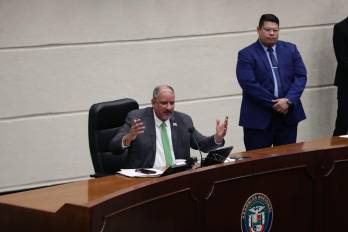Según el economista en jefe de la FAO, Máximo Torrero, la región ha reducido la prevalencia del hambre, con casos destacados como Brasil, República Dominicana...
- 21/11/2008 01:00
The news item on page 2 about the 14-year-old girl who lived without a heart for four months is truly inspiring, from a technical and emotional point of view, but missing from the story was how much it cost and who paid. Was it a meritorious donation of services by the hospital? Did the insurance people open their hearts and approve payment after the first transplant failed, or were her parents immensely rich?
There is a big contrast between the TV hospital dramas, and real life. Miracles are performed on patients, but they never show bill paying time, or snippets from the commercials calling for a national health plan, with ex patients talking about losing their homes and declaring bankruptcy.
These thoughts were prompted by two recent events. The first was a request from a Panama lawyer for an opinion on a real estate web site aimed at the Canadian market. The second was an article in Panama Q , an exciting new magazine.
Canadians are a good target audience. Eighty percent of the country’s wealth is in the hands of people over 50, and they have well established government pension plans, in addition to what they may have socked away themselves. They have recently accounted for 25 percent of US home sales in the sun belts, as they rushed to snap up bargains in the foreclosure market. The early rush has dropped a little because of the falling Canadian dollar which a few months ago was at par with the US dollar.
The web site had a few problems. The first was the price of properties for sale. A few years ago housing prices in Panama were a bargain compared with Canada. Homes in Toronto, for example had a median price of $350,000 and rising. Prices were higher in Calgary and Vancouver. With an overheated market like that Panama prices looked great.
Now Panama is pricing itself out of the Canadian market, as snowbirds flock to the US sunbelts.
The second problem with the web was its information about Panama’s health care facilities. “Prices here are much lower” it gushed. How do you get lower than FREE? Canada’s health care plan even gives free medicine to senior citizens, although in some provinces they might have to pay a dispensing charge of $5 or $6 dollars. When you check the escalating prices of drugs in Panama as revealed by columnist Phil Edmonston recently, $6 doesn’t sound too bad.
Health care prices were again brought to mind when reading the first edition of Panama Q.
U.S.P. Now you may wonder how a new magazine could survive in Panama, where there seems to be more glossy offerings per capita than anywhere else in the world. But PANAMA Q has its own USP (Unique selling proposition) It’s in English.
Publisher Robert Leckie tells me that he greatly underestimated the first print run, as copies were snatched up in hotels and outlets across the country.
The magazine is packed with interesting material, all beautifully illustrated.
One of the articles deals with health care facilities and medical tourism, and gives a detailed cost comparison with the United States. This time Panama comes out ahead.
Of course if you are covered by an insurance plan, what the doctor charges may not matter, unless your illness becomes chronic.
But what of those retirees with “pre-conditions”, a convenient euphemism for “no coverage available”. However low the hospital services may be in comparison to the U.S., they are still big bucks, compared to FREE. For Canadians and Europeans used to government health services, or what the American Medical Association and Sarah Palin like to call Socialist medicine, it’s a big factor in making the decision to move to Panama, or just drop in for a visit.











